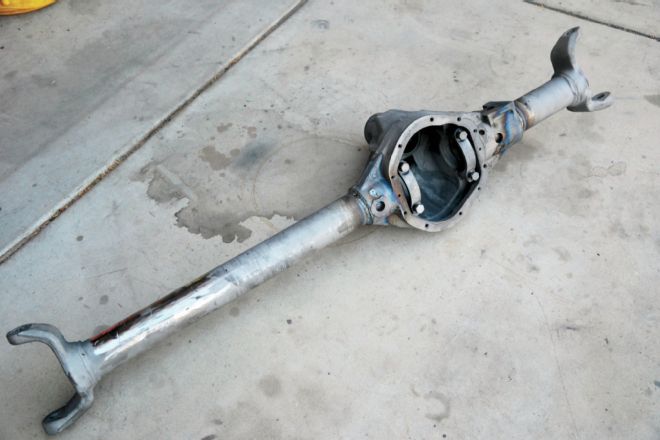
 Verne Simons
Senior Editor, Jp
Verne Simons
Senior Editor, Jp
If you’ve been reading Jp for a while, you probably know we, the editorial staff of your favorite magazine, are human. We are also true Jeep nuts, but that’s beside the point. We occasionally (maybe more than we should) make mistakes, and with any luck, you are laughing with us rather than at us. Sure, we collectively hold an otherwise useless knowledge of all things Jeep—and that is a super power we usually carefully wield—but believe it or not, we still make mistakes. Hopefully, in the end, you can learn from our mistakes like we do, only without the lost time and expense we go through.
To add on to the long line of “oops” moments we’ve had, we recently realized that a junkyard axle we grabbed, for what seemed like a steal, was bent. The plan was to build this cool full-width Ford F-150 high-pinion Dana 44 for one of our Jeep projects. The high-pinion design makes for great front driveshaft angles, and due to the nature of how a front axle turns relative to the gear, the high-pinion design means this axle is stronger than a low-pinion axle. Also, the tubes have a stout 1⁄2-inch wall thickness, so this axle should be difficult to bend. Or should have been difficult to bend; more on that in a minute. As plans changed and time passed, the axle spent way too much time sitting on jackstands in our garage, doing nothing but taking up space. We collected parts for a rebuild, and as our axle rebuild story’s due date was rapidly approaching, we dusted it off and started once again messing with the axlehousing. We had taken the axle down and had it sand blasted it some time back, and that makes working with it nice. Now, as we started working on the axle and used a plasma cutter to cut off the old axle brackets, we noticed a near-fatal problem with the axle: It was bent. It was hard to see the bend unless you stared at the axle for a while or peered down the axletubes. Poo. What now? Is it junk? Is it now only worth its weight in scrap steel? All our plans and parts collecting were for nothing—or so it seemed.
Luckily for us, we had contact with a place that should be able to help us out. That place is Arizona Differential in Phoenix, Arizona. With one call, the owner, Nate, told us to drag our “slightly bent” axle down to him the next day. When we got there, Nate directed us to Tim Adkins who helped us straighten our axle that, as it turns out, had way more problems than we thought. In the end, our junkyard axle has a little bit more money invested in it, but its way stronger and probably straighter than the day it drove out of the Ford factory. Luckily for you, we also grabbed our camera and snapped a few pics to check show how the axle was straightened and strengthened.
Instead of being junk headed for the steel recycler, our junkyard axle is now better than ever.
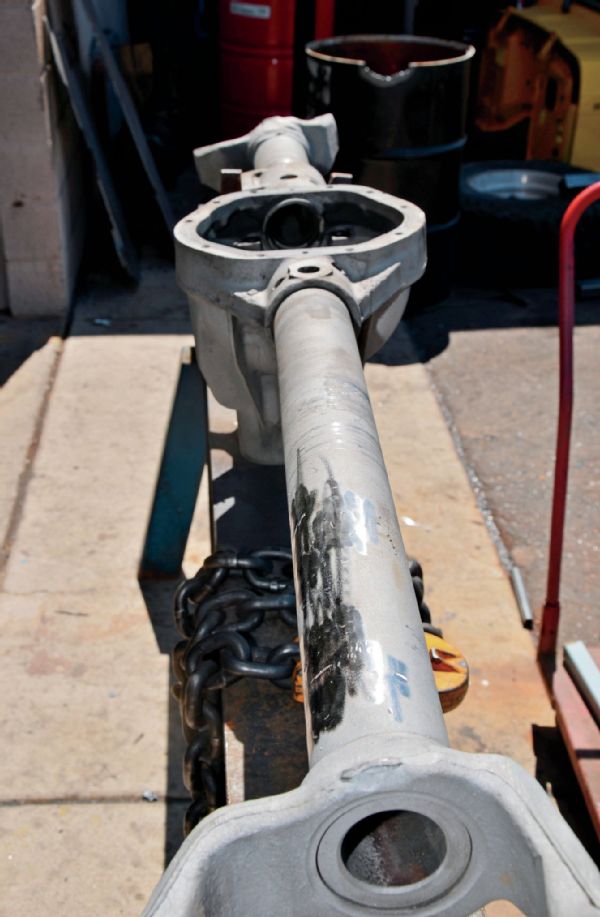
Here is the axle. Can you see the bend? It’s subtle, but it’s there. It looks like maybe the Ford truck the axle came from was jumped and the axle bent in a very slight smile.
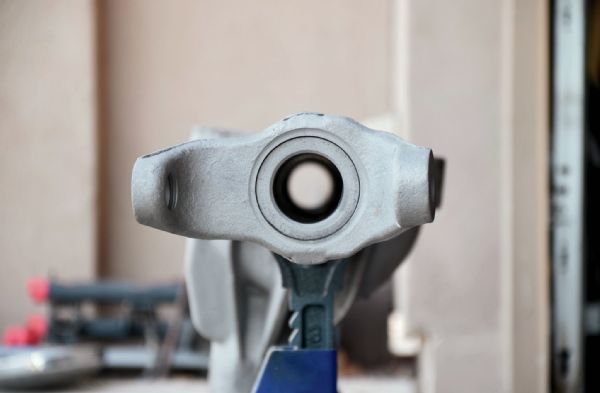
Looking down the inside of the axle is the best way to see even a slight bend. If you line up the center of the two axle openings and the center is not perfectly inline, then your axle is bent. Unfortunately, it’s next to impossible to take a picture of this view, but see how the opposite opening looks egg shaped.
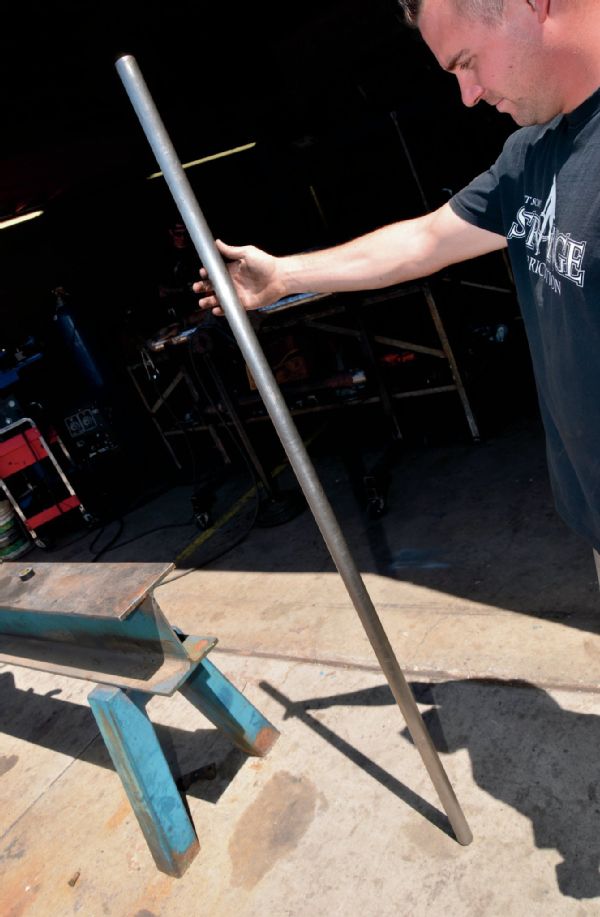
Here, Tim shows us one part of the key to straightening an axle. That is a 1.5-inch solid piece of stainless steel that is about 6 feet long (top). Another key to the straightening are two of these pucks (bottom) where the outside diameter fits snuggly under the axles bearing caps. The inside diameter is the same as the stainless steel rod. With the pucks installed in the axle, you can slide the rod through the axle and see how the axle needs to be bent the opposite way to straighten it.
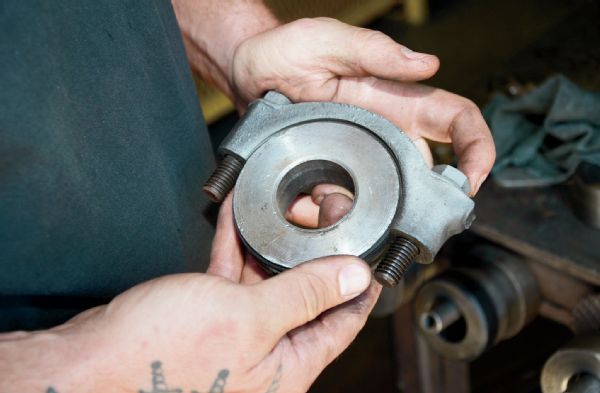
Here, Tim shows us one part of the key to straightening an axle. That is a 1.5-inch solid piece of stainless steel that is about 6 feet long (top). Another key to the straightening are two of these pucks (bottom) where the outside diameter fits snuggly under the axles bearing caps. The inside diameter is the same as the stainless steel rod. With the pucks installed in the axle, you can slide the rod through the axle and see how the axle needs to be bent the opposite way to straighten it.
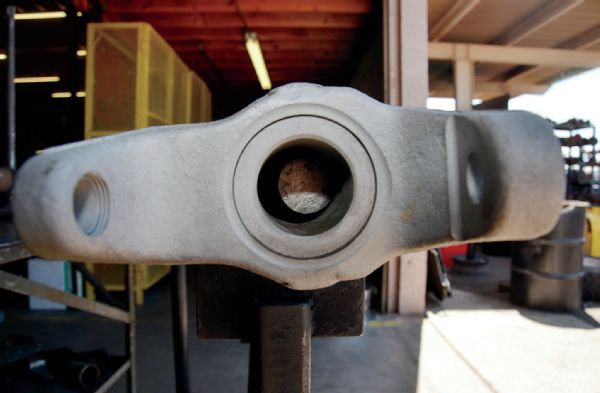
It turns out our axle was far from straight, despite its nice, thick axletubes. Tim couldn’t even slide the stainless rod all the way through our housing without straightening it first. So the next step is to lift the axle onto the straightening jig, which is basically a big piece of 1⁄2-inch thick I-beam steel with a cradle on one end, some huge chain, and a 20-ton jack.
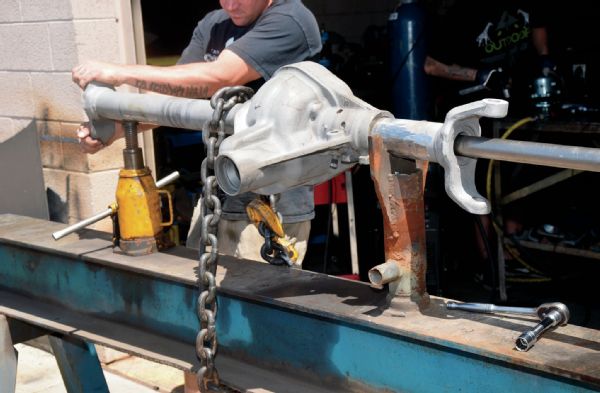
With the axle in the jig, you can begin to see how it works. A keen eye and experience determine how the axle is placed in the jig. The chain’s position is adjusted so that the jack can bend the axle opposite of the direction of the bend. This seems simple, but experience and knowledge of metallurgy is key here. Bend it too far, and you’ve made the problem worse or broken the housing.
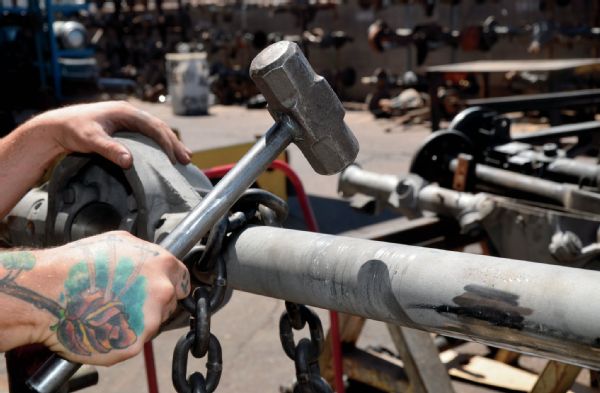
Once the axle is in the jig, it must be bent slightly past straight, so it returns to straight. One thing that Tim also did that helps the steel molecules find their happy place is to whack the axle with a big hammer a few times while it’s under tension.
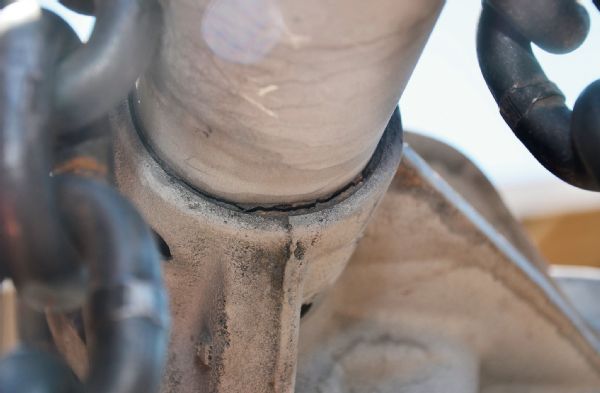
Once Tim had been working on the axle a little while, he noticed that the plug-welds to the cast centersection were tiny and some were cracked. This was allowing the axletube to move around in the housing, which was part of the problem with the axle. Tim also pointed out that if the axle’s inner knuckle is bent, they can’t straighten it, but chances are they can either replace the knuckle or help find a replacement housing.
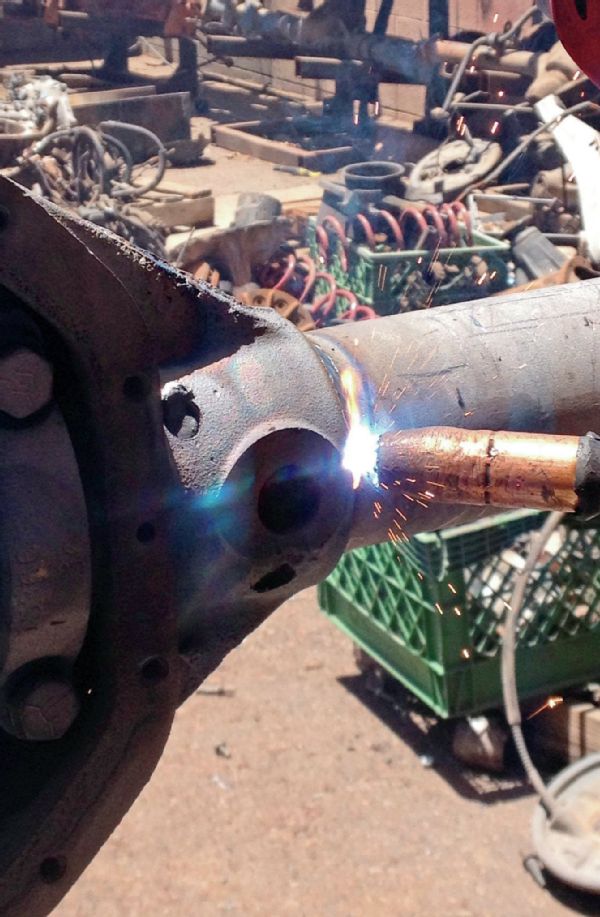
The fix for this is to straighten the axle in the jig, heat the housing with a torch, re-weld the plug welds, and weld the axletubes to the cast housing. Proper heating and slow cooling needs to occur for this to work properly. You can’t just weld the axletubes to the housing without heating the casting and then allowing it to cool slowly—in our case, while sitting in the Arizona sun on a 100-degree day. This makes our axle way stronger than it was with its tiny inadequate plug-welds.
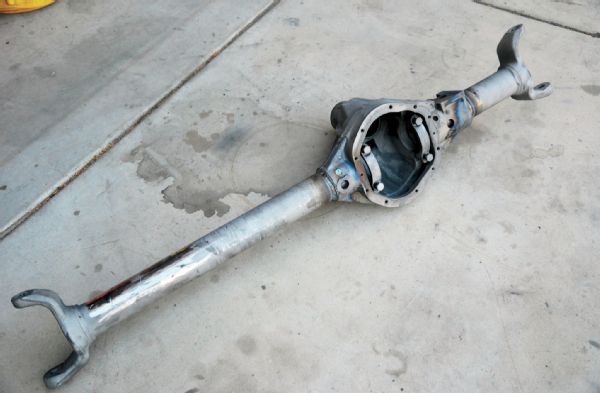
With a little work, our junkyard axle is better than we could have ever planned. Instead of being junk headed for the steel recycler, our junkyard axle is now better than ever. Arizona Differential charges a very reasonable $200 to $300 to straighten a front or rear axle, depending on how bad the axle is bent. Welding the axle like we did isn’t always necessary and brought our total repair to $350. Arizona Differential can also re-tube an axlehousing or build a custom axle from scratch. With their years and years of experience, wholesale prices, and huge inventory of used parts, your fix doesn’t have to cost a mint.